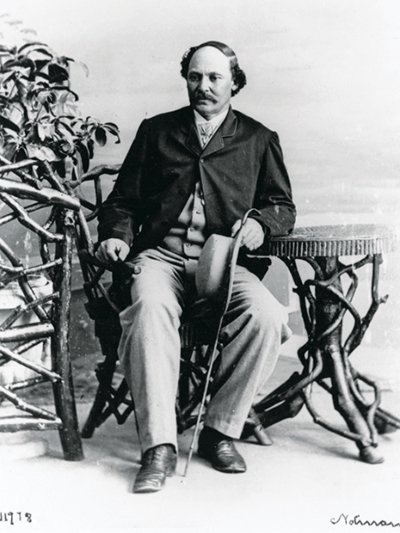African American Artists of the Hudson River School are represented in collections at Smithsonian American Art Museum, Art and Artist Files, and American Art/Portrait Gallery Library
African American Artists of the Hudson River School
Robert S. Duncanson (1828—1901)
Robert S. Duncanson was the first African American artist to achieve international acclaim. According to Oxford Art Online, the artist was born in New York State to a family of painters and handymen. He was self-taught and worked as an itinerant artist through the 1840s, paintings portraits of abolitionists and small commercial commissions. His professional breakthrough came with a commission to produce several landscape murals for Cincinnati’s Belmont Estate (Now the Taft Museum of Art). Duncanson’s career flourished even through the Civil War, which forced him to live and work in Montreal. He continued painting and exhibiting through the end of his life in 1872.
Robert S. Duncanson was the first African American artist to achieve international acclaim. According to Oxford Art Online, the artist was born in New York State to a family of painters and handymen.
Robert S. Duncanson was the first African American artist to achieve international acclaim. According to Oxford Art Online, the artist was born in New York State to a family of painters and handymen. He was self-taught and worked as an itinerant artist through the 1840s, paintings portraits of abolitionists and small commercial commissions. His professional breakthrough came with a commission to produce several landscape murals for Cincinnati’s Belmont Estate (Now the Taft Museum of Art). Duncanson’s career flourished even through the Civil War, which forced him to live and work in Montreal. He continued painting and exhibiting through the end of his life in 1872.
Edward Mitchell Bannister
(1828—1901)
Edward Mitchell Bannister was a Canadian–American oil painter of the American Barbizon school. Born in colonial New Brunswick, he spent his adult life in New England in the United States. There, along with his wife Christiana Carteaux, he was a prominent member of African-American cultural and political communities, such as the Boston abolition movement. Bannister received national recognition after he won a first prize in painting at the 1876 Philadelphia Centennial Exhibition.[2] He was also a founding member of the Providence Art Club and the Rhode Island School of Design.
Bannister's style and predominantly pastoral subject matter reflected his admiration for the French artist Jean-François Millet and the French Barbizon school. A lifelong sailor, he also looked to the Rhode Island seaside for inspiration. Bannister continually experimented, and his artwork displays his Idealist philosophy and his control of color and atmosphere. He began his professional practice as a photographer and portraitist before developing his better-known landscape style.
Later in his life, Bannister's style of landscape painting fell out of favor. With decreasing painting sales, he and Christiana Carteaux moved out of College Hill in Providence to Boston and then a smaller house on Wilson Street in Providence. Bannister was overlooked in American art historical studies and exhibitions after his death in 1901, until institutions like the National Museum of African Art returned him to national attention in the 1960s and 1970s.
Edward Mitchell Bannister was a painter whose work was heavily influenced by the Hudson River School. While he had an interest in art from a young age, Bannister was a ship’s cook and a barber before focusing on art in the 1850s. In 1870 Bannister moved to Providence, Rhode Island where his art career took off. Six years later he became the first African American artist to win a national award. His painting “Under the Oaks” took first prize at the Philadelphia Centennial Exhibition. Bannister would continue painting through the end of his life in 1897.
REFERENCES
UNBOUND: Smithsonian Libraries and Archives
Detroit Free Press: Landscape artist Robert S. Duncanson spent decades creating in Detroit

















